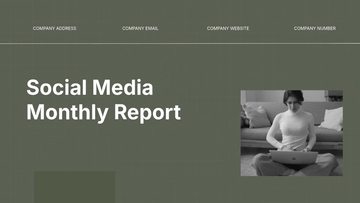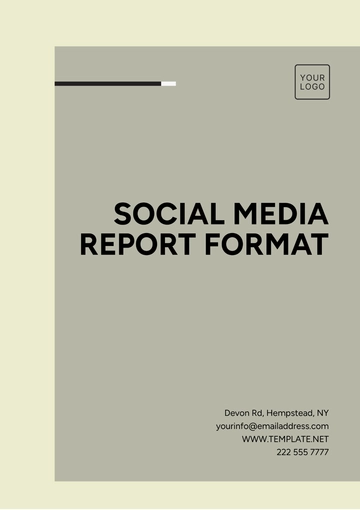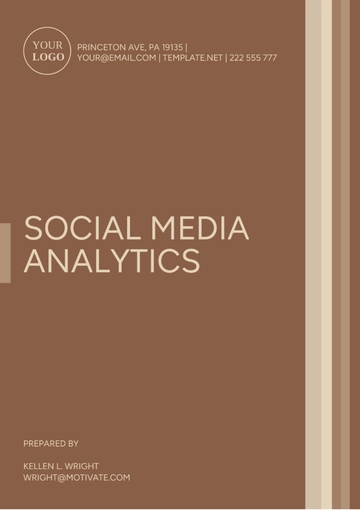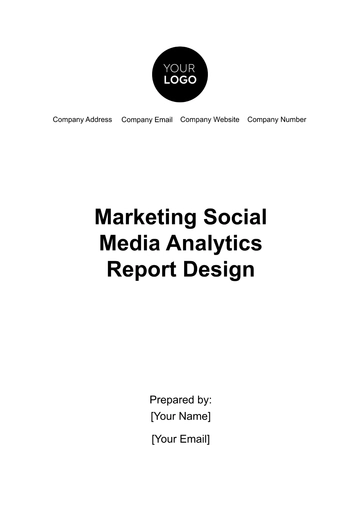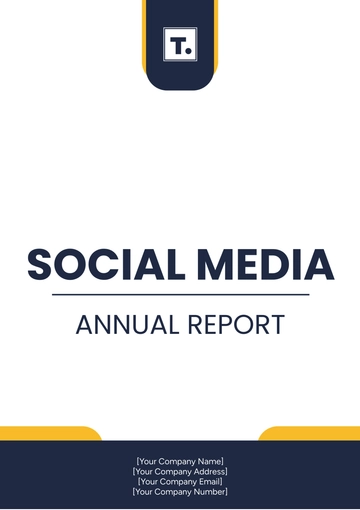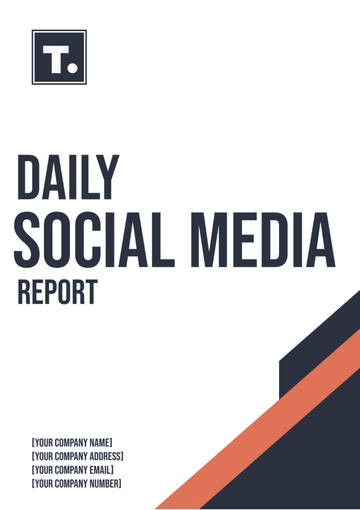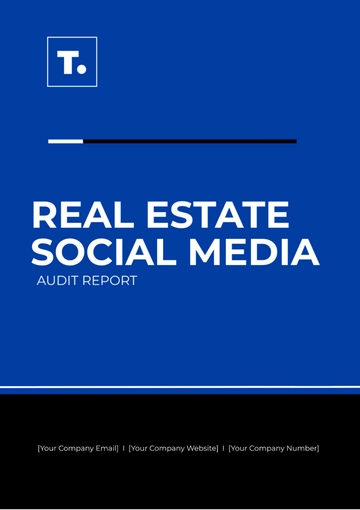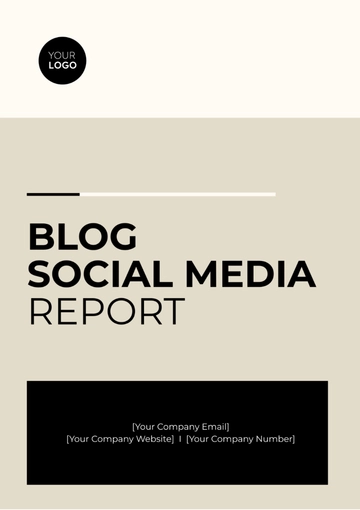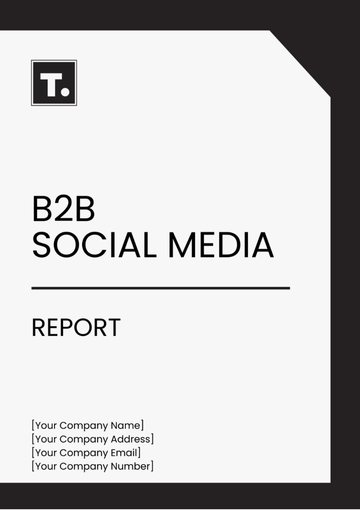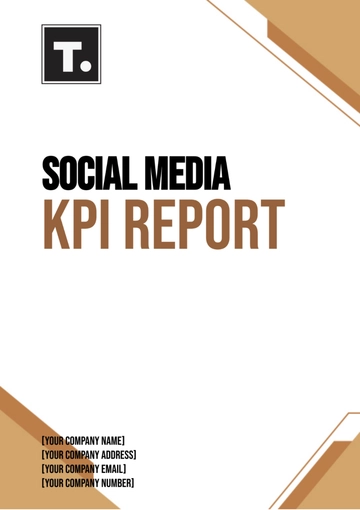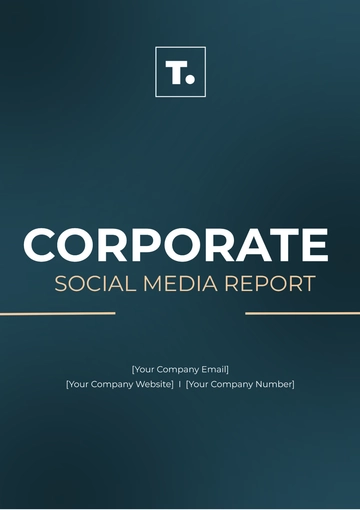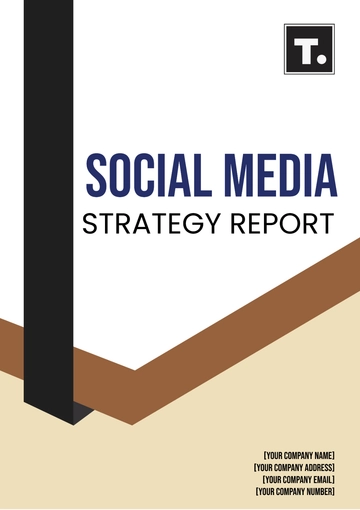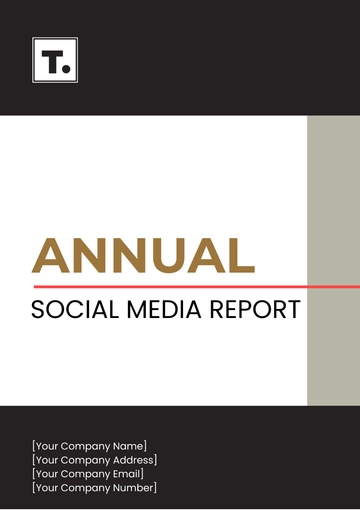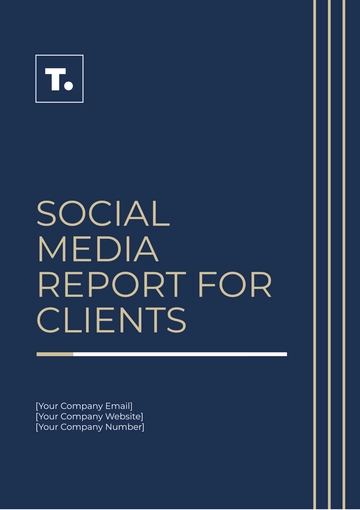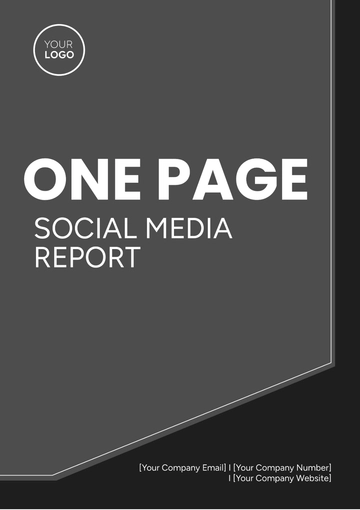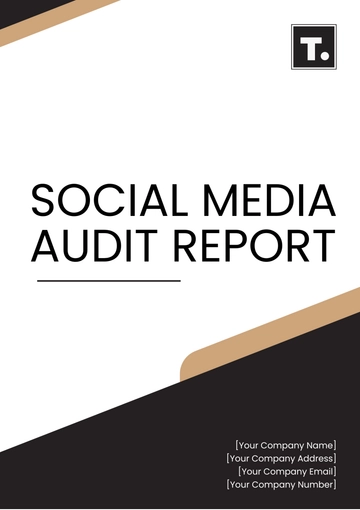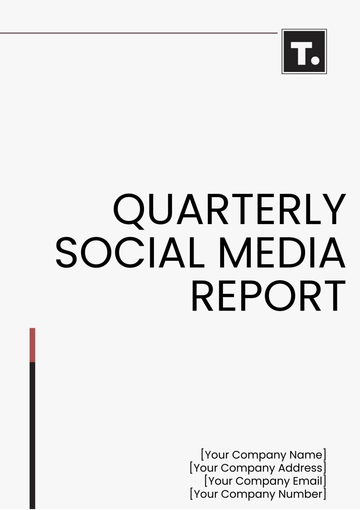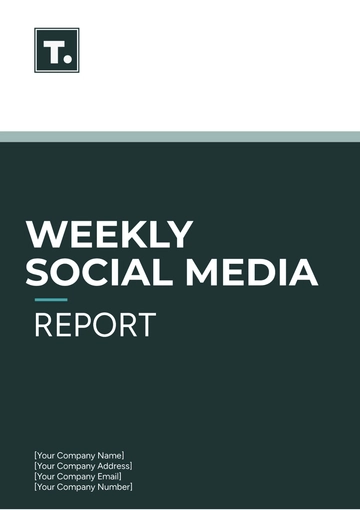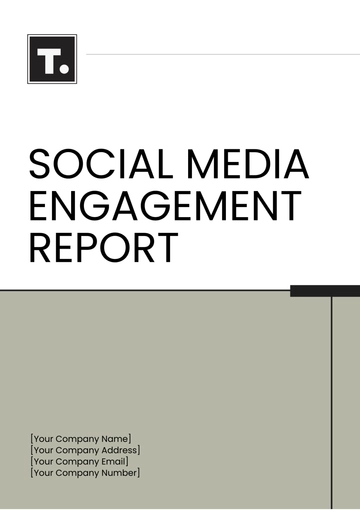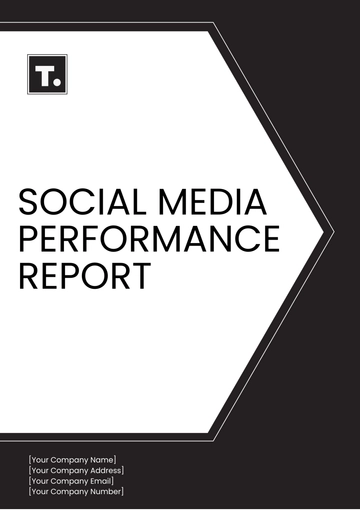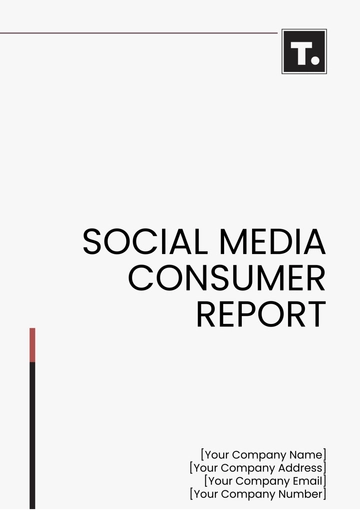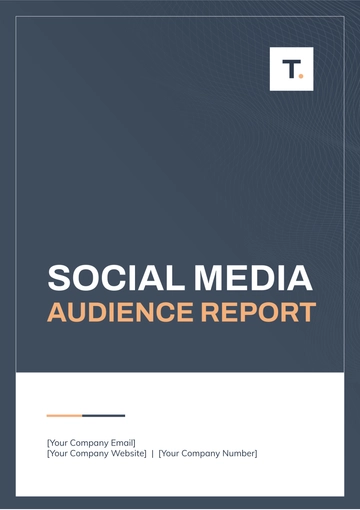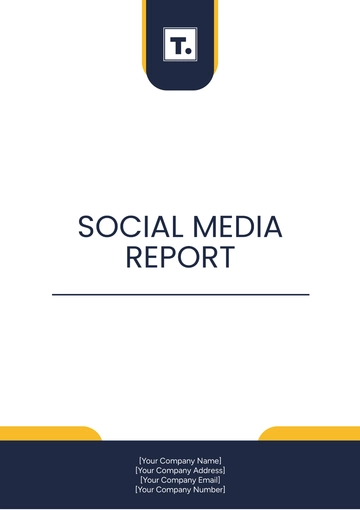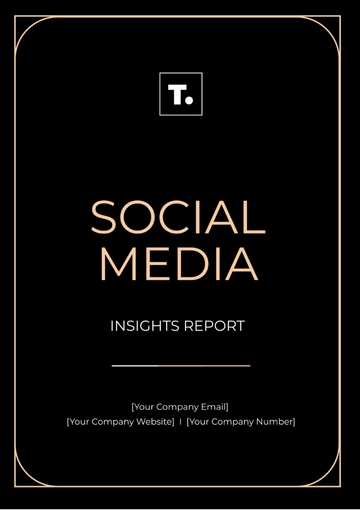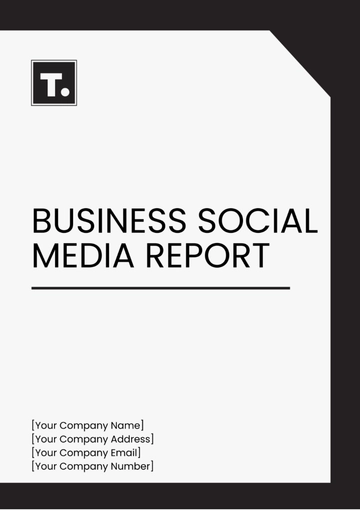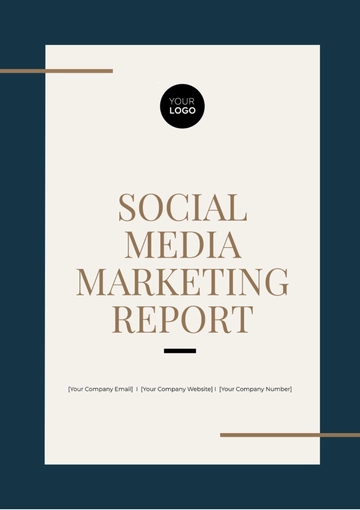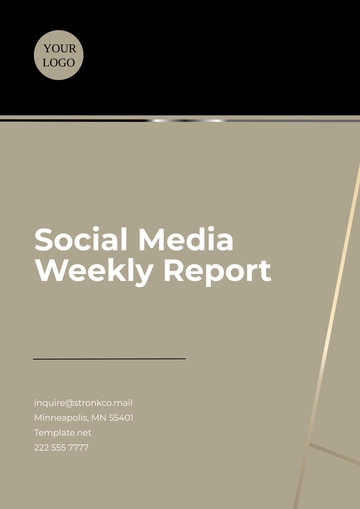Free Social Media Marketing Mid-Year Report
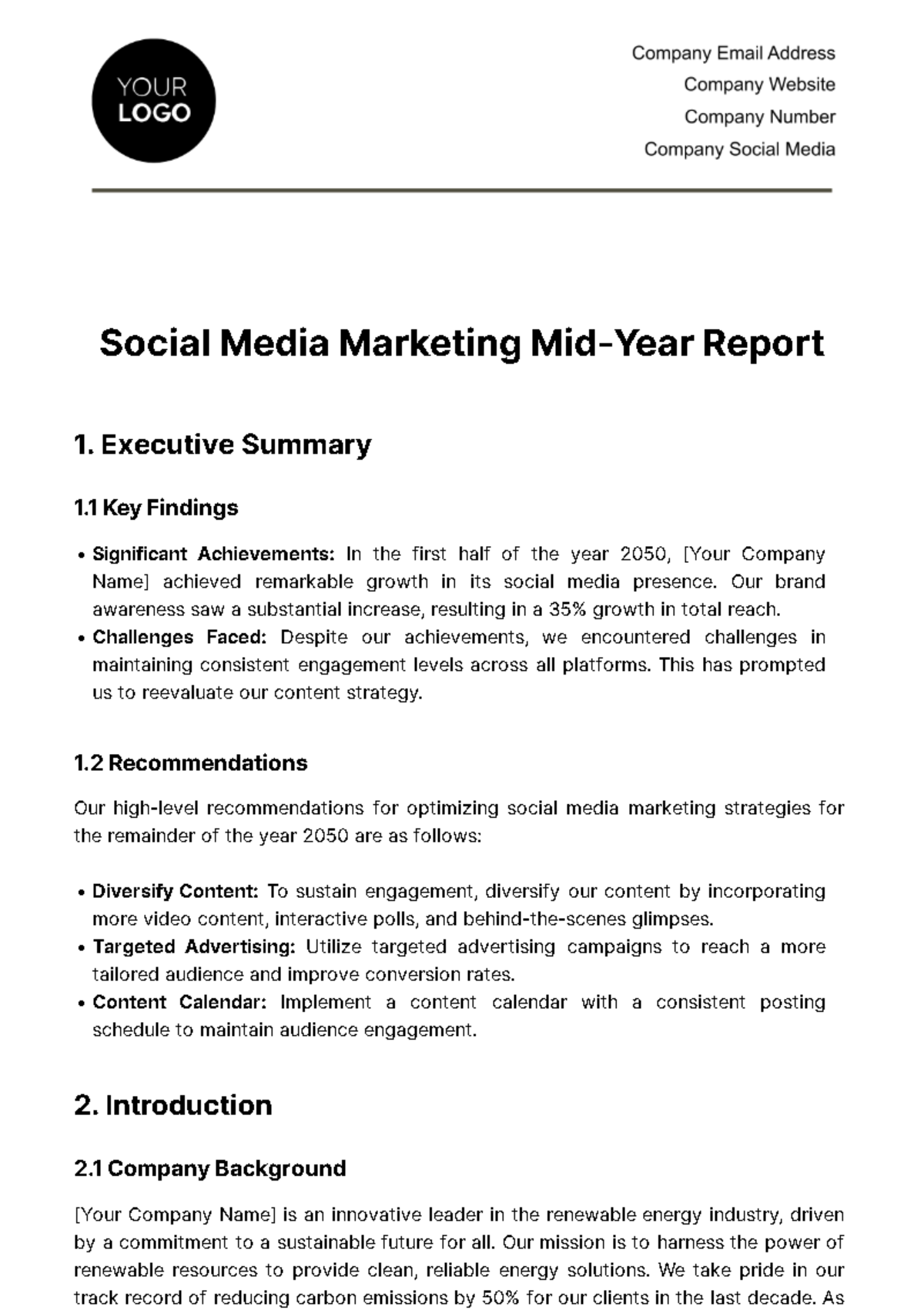
1. Executive Summary
1.1 Key Findings
Significant Achievements: In the first half of the year 2050, [Your Company Name] achieved remarkable growth in its social media presence. Our brand awareness saw a substantial increase, resulting in a 35% growth in total reach.
Challenges Faced: Despite our achievements, we encountered challenges in maintaining consistent engagement levels across all platforms. This has prompted us to reevaluate our content strategy.
1.2 Recommendations
Our high-level recommendations for optimizing social media marketing strategies for the remainder of the year 2050 are as follows:
Diversify Content: To sustain engagement, diversify our content by incorporating more video content, interactive polls, and behind-the-scenes glimpses.
Targeted Advertising: Utilize targeted advertising campaigns to reach a more tailored audience and improve conversion rates.
Content Calendar: Implement a content calendar with a consistent posting schedule to maintain audience engagement.
2. Introduction
2.1 Company Background
[Your Company Name] is an innovative leader in the renewable energy industry, driven by a commitment to a sustainable future for all. Our mission is to harness the power of renewable resources to provide clean, reliable energy solutions. We take pride in our track record of reducing carbon emissions by 50% for our clients in the last decade. As pioneers in the industry, we continue to push the boundaries of what's possible in the pursuit of a greener planet.
2.2 Objectives
Our social media marketing objectives for the year 2050 include:
Increasing brand awareness and recognition within our target audience.
Enhancing engagement and interaction with our followers.
Driving a 25% increase in website traffic through social media channels.
3. Key Performance Metrics
3.1 Performance Summary
Here is an overview of the primary key performance metrics for the first half of the year 2050:
Total Reach: Our social media content reached a total of 1,500,000 unique users, marking a 40% increase compared to the previous period.
Engagement Rate: The engagement rate for the first half of the year 2050 stood at 12.5%, reflecting a steady growth trend.
Conversion Rate: Our conversion rate for H1 2050 reached 7.2%, showcasing a consistent ability to convert engagement into actions.
3.2 Comparative Analysis
Comparing the metrics from H1 2050 with:
Previous Period: Our total reach has increased by 40% compared to the previous period, indicating steady growth.
Benchmark Data: Our engagement rate surpasses industry benchmarks, demonstrating the effectiveness of our strategies.
4. Platform-Specific Analysis
4.1 Facebook
Facebook Metrics | H1 2050 Performance |
Page Likes | 25,000 new page likes |
Post Reach | 750,000 (Peak in March 2050) |
Post Engagement Rate | 15.8% (Highly engaged audience) |
4.2 Instagram
Instagram Metrics | H1 2050 Performance |
Followers | 40,000 new followers |
Post Reach | Posts reached 1,200,000 users |
Post Engagement Rate | 9.5% |
4.3 Twitter
Twitter Metrics | H1 2050 Performance |
Followers | Gained 18,000 new followers |
Tweet Impressions | 750,000 |
Retweet Rate | 7.2% |
4.4 LinkedIn
LinkedIn Metrics | H1 2050 Performance |
Followers | Achieved 30,000 followers |
Post Impressions | 900,000 |
Click-Through Rate (CTR) | 5.8% |
5. Content Analysis
5.1 Content Overview
In the first half of 2050, we maintained an active social media presence with the following content:
Number of Posts: We published a total of 150 posts across all platforms.
Content Types: Our content mix included images, videos, articles, and interactive polls.
Posting Schedule: We maintained a consistent posting schedule with daily updates during peak engagement times.
5.2 Top-Performing Content
Our top-performing content pieces during H1 2050 were as follows:
Engagement Leader: A video post showcasing our latest product received over 100,000 views and generated 2,500 likes and 750 shares, resulting in an engagement rate of 15.2%.
Reach Champion: A visually striking infographic highlighting industry trends reached 500,000 users, making it our most far-reaching content piece.
Conversion King: Our sponsored article on sustainable practices led to a 12% click-through rate (CTR) and a 5% conversion rate, outperforming other content.
5.2 Top-Performing Content
While most of our content performed well, a few posts did not meet expectations:
Low Engagement: Some plain text updates on Twitter received minimal engagement, likely due to their lack of visual appeal.
Limited Reach: Longer articles on LinkedIn had lower reach compared to shorter, more visually appealing content.
6. Audience Insights
6.1 Demographics
Our social media audience demographics in H1 2050 were as follows:
Age: | Predominantly between 25-34 years old (50%), followed by 18-24 (30%). |
Gender: | 60% male, 40% female. |
Location: | Majority from North America (65%), Europe (20%), and Asia (10%). |
Interests: | Main interests include sustainability, technology, and entrepreneurship. |
6.2 Audience Growth
Comparing audience growth during H1 2050 with the previous period, we experienced a notable increase of 20% in our follower count. This growth was driven by our engaging content and targeted marketing efforts.
7. Competitive Analysis
7.1 Comparative Metrics
Comparing our performance metrics with those of our competitors, we found that in H1 2050, we outperformed Competitor Alpha in terms of engagement rate and total reach. However, Competitor Beta had a higher follower growth rate. These insights will help us refine our strategies.
8. Campaign Performance
8.1 Campaign Overview
We executed several social media campaigns in H1 2050, including:
Campaign X: Product Launch
Campaign Y: Brand Awareness
Campaign Z: Website Traffic
Each campaign had specific objectives, such as increasing brand awareness, promoting a product launch, or driving website traffic.
8.2 ROI Analysis
Our ROI analysis revealed that Campaign X, which focused on promoting a new product, generated an impressive ROI of 25%. On the other hand, Campaign Y, a brand awareness campaign, resulted in a lower ROI of 10%. This data will inform future campaign strategies and budget allocation.
9. Challenges and Opportunities
9.1 Challenges Face
During H1 2050, we encountered several challenges:
Algorithm Changes: Frequent algorithm updates on social media platforms impacted the organic reach of our content, requiring us to adapt our strategies.
Content Saturation: Increased competition in our niche led to content saturation, making it harder to stand out.
9.2 Opportunities
While we faced challenges, we also identified opportunities for growth in the second half of the year:
New Platform Features: Upcoming features on platforms like Instagram and TikTok present opportunities for innovative and engaging content.
Data-Driven Decisions: Leveraging data analytics more effectively to fine-tune our content and targeting strategies.
Partnerships: Exploring partnerships with industry influencers and like-minded brands to expand our reach.
10. Recommendations
10.1 Actionable Insights
Based on our analysis, here are actionable recommendations to enhance social media marketing efforts for the remainder of the year:
Content Diversification: Expand our content mix to include more video content, live streams, and user-generated content to capture varied audience interests.
Audience Segmentation: Segment our audience based on demographics and interests for more personalized content and targeting.
A/B Testing: Conduct A/B testing on ad creatives, ad copy, and posting times to identify high-performing combinations.
Influencer Collaborations: Collaborate with industry influencers to leverage their reach and credibility.
Content Calendar: Develop a comprehensive content calendar aligned with key events, holidays, and product launches to maintain a consistent posting schedule.
Conclusion
The first half of 2050 saw remarkable growth in our social media presence, with significant achievements in reach, engagement, and conversions. Despite challenges such as algorithm changes and content saturation, we remain committed to our mission of "empowering individuals through sustainable technology solutions."
As we move into the second half of the year, our priorities include content diversification, audience segmentation, and data-driven decision-making. These strategies will allow us to adapt to evolving social media landscapes, capitalize on opportunities, and continue our journey toward a successful year.
- 100% Customizable, free editor
- Access 1 Million+ Templates, photo’s & graphics
- Download or share as a template
- Click and replace photos, graphics, text, backgrounds
- Resize, crop, AI write & more
- Access advanced editor
Discover the Social Media Marketing Mid-Year Report Template exclusively on Template.net. This editable and customizable report template offers comprehensive insights tailored to your business needs. Crafted for efficiency, it's easily editable in our AI Editor Tool, ensuring seamless customization for your mid-year analysis.
You may also like
- Sales Report
- Daily Report
- Project Report
- Business Report
- Weekly Report
- Incident Report
- Annual Report
- Report Layout
- Report Design
- Progress Report
- Marketing Report
- Company Report
- Monthly Report
- Audit Report
- Status Report
- School Report
- Reports Hr
- Management Report
- Project Status Report
- Handover Report
- Health And Safety Report
- Restaurant Report
- Construction Report
- Research Report
- Evaluation Report
- Investigation Report
- Employee Report
- Advertising Report
- Weekly Status Report
- Project Management Report
- Finance Report
- Service Report
- Technical Report
- Meeting Report
- Quarterly Report
- Inspection Report
- Medical Report
- Test Report
- Summary Report
- Inventory Report
- Valuation Report
- Operations Report
- Payroll Report
- Training Report
- Job Report
- Case Report
- Performance Report
- Board Report
- Internal Audit Report
- Student Report
- Monthly Management Report
- Small Business Report
- Accident Report
- Call Center Report
- Activity Report
- IT and Software Report
- Internship Report
- Visit Report
- Product Report
- Book Report
- Property Report
- Recruitment Report
- University Report
- Event Report
- SEO Report
- Conference Report
- Narrative Report
- Nursing Home Report
- Preschool Report
- Call Report
- Customer Report
- Employee Incident Report
- Accomplishment Report
- Social Media Report
- Work From Home Report
- Security Report
- Damage Report
- Quality Report
- Internal Report
- Nurse Report
- Real Estate Report
- Hotel Report
- Equipment Report
- Credit Report
- Field Report
- Non Profit Report
- Maintenance Report
- News Report
- Survey Report
- Executive Report
- Law Firm Report
- Advertising Agency Report
- Interior Design Report
- Travel Agency Report
- Stock Report
- Salon Report
- Bug Report
- Workplace Report
- Action Report
- Investor Report
- Cleaning Services Report
- Consulting Report
- Freelancer Report
- Site Visit Report
- Trip Report
- Classroom Observation Report
- Vehicle Report
- Final Report
- Software Report
